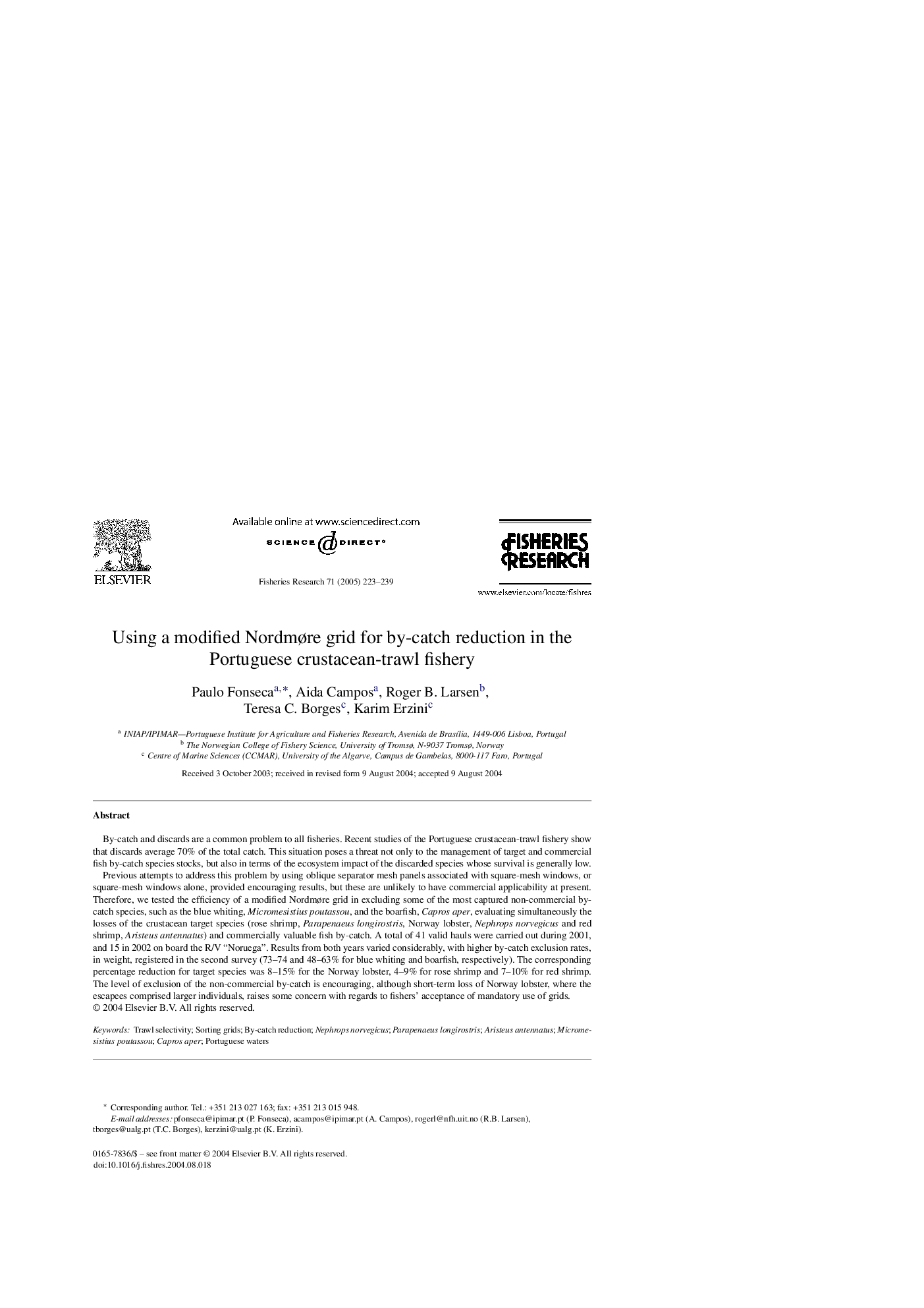| Article ID | Journal | Published Year | Pages | File Type |
|---|---|---|---|---|
| 9481814 | Fisheries Research | 2005 | 17 Pages |
Abstract
Previous attempts to address this problem by using oblique separator mesh panels associated with square-mesh windows, or square-mesh windows alone, provided encouraging results, but these are unlikely to have commercial applicability at present. Therefore, we tested the efficiency of a modified Nordmøre grid in excluding some of the most captured non-commercial by-catch species, such as the blue whiting, Micromesistius poutassou, and the boarfish, Capros aper, evaluating simultaneously the losses of the crustacean target species (rose shrimp, Parapenaeus longirostris, Norway lobster, Nephrops norvegicus and red shrimp, Aristeus antennatus) and commercially valuable fish by-catch. A total of 41 valid hauls were carried out during 2001, and 15 in 2002 on board the R/V “Noruega”. Results from both years varied considerably, with higher by-catch exclusion rates, in weight, registered in the second survey (73-74 and 48-63% for blue whiting and boarfish, respectively). The corresponding percentage reduction for target species was 8-15% for the Norway lobster, 4-9% for rose shrimp and 7-10% for red shrimp. The level of exclusion of the non-commercial by-catch is encouraging, although short-term loss of Norway lobster, where the escapees comprised larger individuals, raises some concern with regards to fishers' acceptance of mandatory use of grids.
Keywords
Related Topics
Life Sciences
Agricultural and Biological Sciences
Aquatic Science
Authors
Paulo Fonseca, Aida Campos, Roger B. Larsen, Teresa C. Borges, Karim Erzini,
